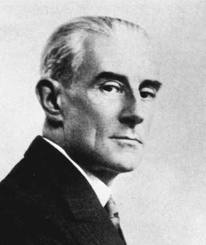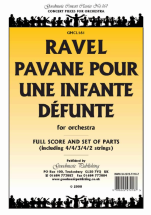Pavane pour une infante défunte
Buy this item (in stock)
Product ID: GM1 CL161
By Maurice Ravel
Publisher:
Goodmusic
Arranger:
orig.
Series:
Concert Classics
Genre:
Impressionism
Line Up:
Symphony Orchestra
Duration:
6:00
Level: 4
Set & Score
This item is in stock
About this item
The "Pavane for a Dead Princess" was composed for solo piano by Maurice Ravel in 1899 when he was studying at the Conservatoirede Paris under Gabriel Faure. He also did an orchestral version which appeared in 1910. This edition is as the original Ravel orchestration, save for the fact that he wrote for horns in G which appear in F in this edition.
Instrumentation
2 Flutes, Oboe, 2 Clarinets in Bb, 2 Bassoons 2 Horns in F, Harp Strings (Violin 1, Violin 2, Viola, Cello, Bass)
Reviews and rating
No review available, be the first to write one!

Composer
Maurice Ravel (1875-1937)

Joseph-Maurice Ravel (March 7, 1875 – December 28, 1937) was a French composer known especially for his melodies, orchestral and instrumental textures and effects. Much of his piano music, chamber music, vocal music and orchestral music has entered the standard concert repertoire.
Ravel's piano compositions, such as Jeux d'eau, Miroirs, Le tombeau de Couperin and Gaspard de la nuit, demand considerable virtuosity from the performer, and his orchestral music, including Daphnis et Chloé and his arrangement of Modest Mussorgsky's Pictures at an Exhibition, uses a variety of sound and instrumentation.
Ravel is perhaps known best for his orchestral work Boléro (1928), which he considered trivial and once described as "a piece for orchestra without music".
More info about the composer...



 Click above to view samples
Click above to view samples
